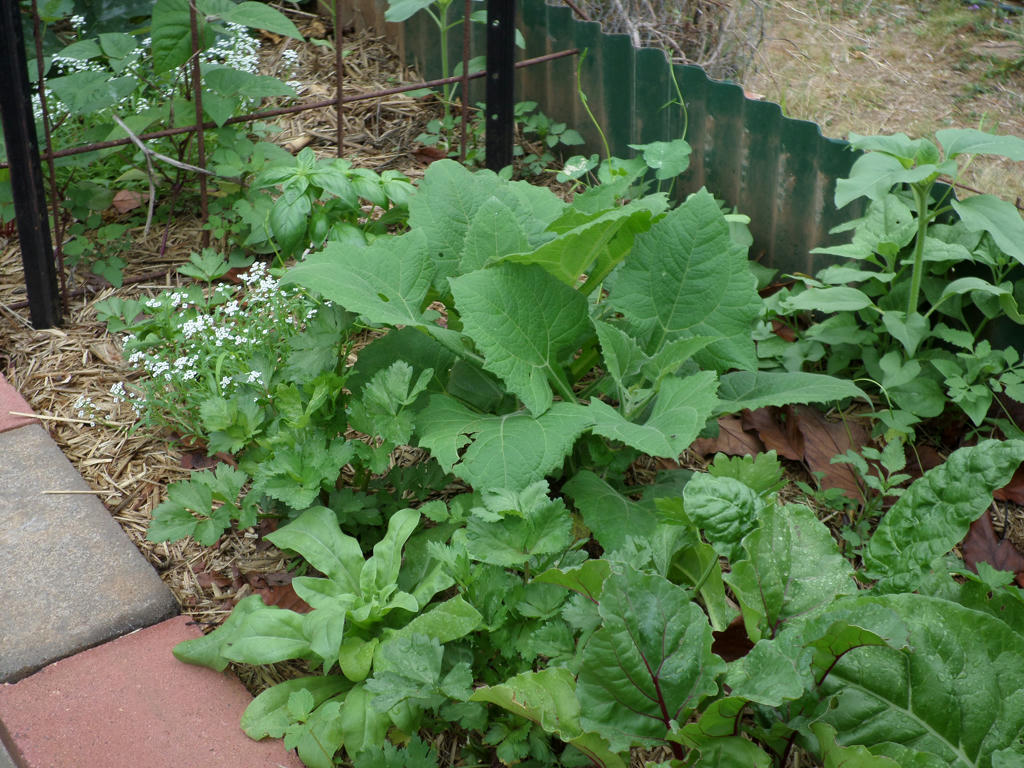Blooming in summer
Back in their prime, the Jerusalem Artichokes were healthy and blooming; attracting the native bees. But in the time between drinks, they started to wane. Its important to remind myself, they were destined to die back anyway - even if they probably died back, a little sooner than I'd like.
The harvest
Three tubers out of the four I originally planted, grew, and we dug a crazy amount of tubers from those few plants. So this is definitely a keeper crop I wanted to save for next year. Although, I recently learned, if you pinch back the blooms, the yields increase. I'm not sure I want to deny the native bees the forage though.
We also picked the last of our Kent pumpkins from the vine. Not many produced, because, as usual, the larger bees weren't always around. Those pumpkin flowers are really made for European bees, because if you see them fully loaded with pollen, they struggle to fly straight! Its really funny to watch. So I wonder if that's why the smaller, native bees, avoid them - unless the European bees have reduced the pollen, first?
Do you watch bees in your garden? I like to observe who turns up to what, and how they operate.
Doing well, when moisture was available
Now onto the elusive Yacon tuber, which is my second attempt at planting here. The previous year's attempt died. I'd heard great things about this edible plant. It was meant to be hardy, delicious to eat and extremely easy to look after. If only that were the case for me. This year has proven to be another miss!
Yacon ~ centre
It grew tall, really quick, then the stalks proceeded to dry out with the lack of rain, and my inability to water them. Before they died completely, however, it was time to dig them up. What was waiting for me underneath the soil? Well, not a lot, apparently.
Yacon harvest
I got one shrivelled, brown, edible tuber, which was soft and not really edible. There were no red tubers, which are the ones you are meant to use for propagation. Although, there was something worth noting, a little closer up...
Sprouting
It looks to be a brown tuber, re-sprouting. So its possible, I could save this perennial for next year? I've already planted it into a pot.
I'm painfully aware it's too early to plant, as winter is on its way, and this is a warm weather crop. Because of the small size however, I suspect the new shoot won't survive the wait through winter, in to spring. I'll just have to give the container, a warm spot through the colder months, and cross my fingers.
The last of the spoils
In the meantime, we'll just have to savour our last offering from summer, and eat it slowly. Before the native bush rats, find it curing on the tin roof, preferably.








Well, you got more Jerusalem artichokes than I did. Again, with me, watering was the problem. It takes a really dry period to appreciate how important water is, doesn't it? If I get a good yacon harvest with plenty of replanting tubers, I could possibly send you some. I'll wait and see and contact you when I harvest. I'm wondering about trying them in a wicking box, but I think my boxes would be too shallow. Maybe I'll try a large tub. I'm really thinking tubs and wicking boxes are the way to go to eliminate competition from other root systems.
ReplyDeleteLack of rain always makes me appreciate how little water storage we have! It's the same for anyone who lives on tank water. Though, I'm sure others see it through their increased water bills. At the end of the day though, its still disheartening watching the garden struggle.
DeleteI'll let you know how I go with my tiny tuber of Yacon. If it doesn't make it and you have spares, I will take up the offer. Thanks. :)
When harvesting my Jerusalem Artichokes, they weren't deep underground, so maybe the 30cms depth in a wicking box will work? I can only imagine, the tubers will grow where they won't come into strife. So maybe they won't go right down into the water level, and stay where the soil is drier?
I don't know about yacons though. They seem to have a larger crop underground - from the images I've seen. It's worth experimenting with one tuber perhaps? Good luck with your harvest though. I'd like to see someone succeed with them. :)
This is my biggest fear with re-establishing productive veggie patch - am I ready to consistently put it as a high priority as here it gets so very hot a few days off and the entire season is wasted. Right now I'm only up to our herbs. Hopefully by spring we will be ready.
ReplyDeletexx
Growing vegetables can be a big commitment alright. But then, its fun to experiment and see what nature has in store too. Starting with herbs was a good great way to get the ball rolling. Especially if they're the hardy variety.
DeleteI'm trying to catch up with your blog right now. You did pretty good if that is all the Jerusalem Artichokes you got. They spread like mad on our property and I even considered selling them since we got so many. I didn't know about cutting off the bloom. We noticed that bees are very attracted to plants with purple flowers ourselves.
ReplyDeleteFunny thing about bees is, if we wear light or vivid blue shirts in the garden, they stalk us. I'm attempting to propagate more rosemary for the bee population, as they flower reliably whether it rains or not. So bees to really favour the blue to purple end of the colour spectrum.
ReplyDelete